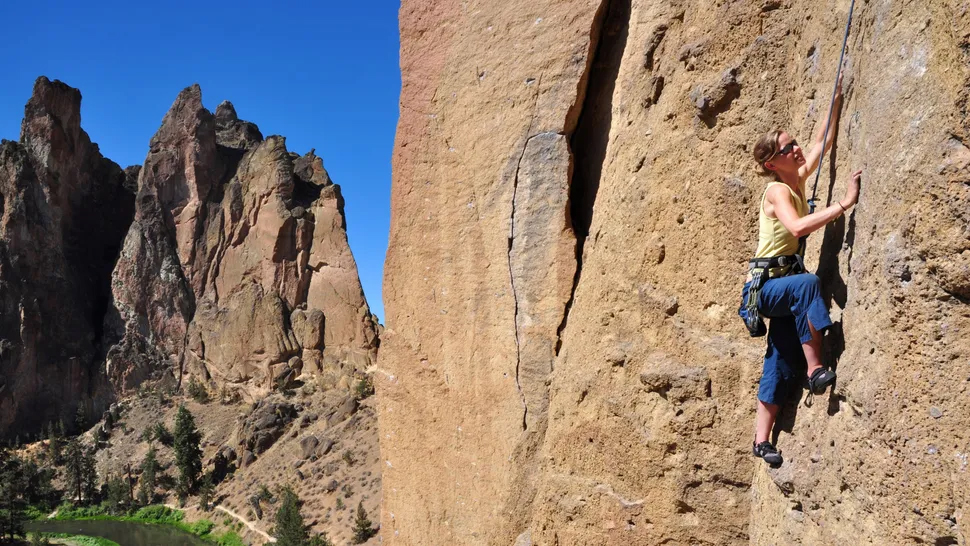
Achieving a redpoint is one of the holy grails of rock climbing. If you follow developments in sport climbing or the world’s elite climbers, you’ll probably be at least familiar with the term. The most difficult climbs in the world have been ‘redpointed’, climbed in a style that garners praise, respect and admiration from the climbing community.
But what exactly is redpointing? How does it differ from on-sighting or flashing a route? And where does it come from? We asked one of our climbing experts to explain the term, look into its German origins and reveal some of the most important redpoint climbs in history.
What is a redpoint?
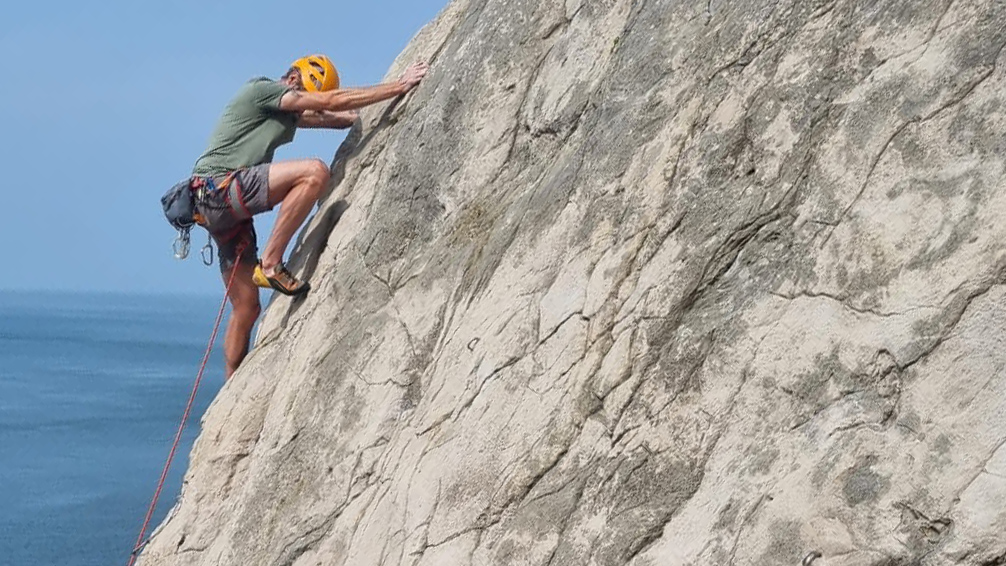
Redpoint is a rock climbing term that describes a successful climb whereby the climber rehearses the route beforehand and then sends it without falling or resting on the rope. This means that a redpoint climb is a form of free climb, in that the climber was not reliant on protective or aid gear to actually climb the route.
A redpoint climb can be achieved in both trad climbing and sport climbing, though it’s a more widely used term in sport. It’s normal for climbers make many attempts to conquer a difficult sport climbing route, puzzling out the intricacies of the moves required to tackle the most difficult sections. Whether it’s the second or third attempt, or the 1,000th, if the climber manages to lead the route without resting on the rope, they can claim a redpoint ascent.
Some of the world’s greatest sport climbers take years working on incredibly challenging projects, practising the moves and finally overcoming their foe. For example, one of the hardest sport climbs in history is Séb Bouin’s DNA, graded 9c (5.15d), in France’s spectacular Verdon Gorge. He claimed a redpoint ascent in 2022 after over 250 attempts. Sometimes, patience is required to achieve greatness.
What other styles of ascent are there?
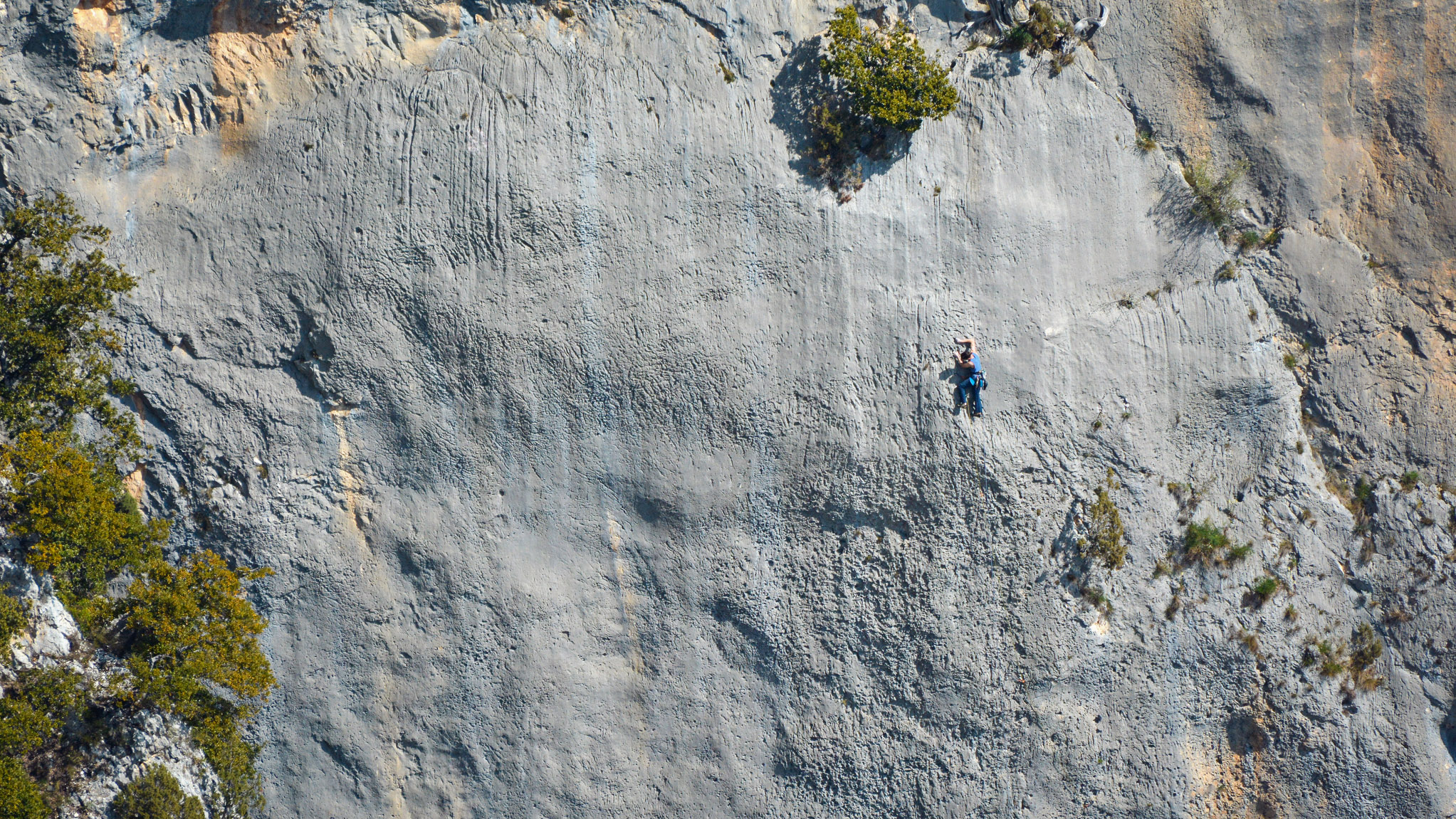
Other terms to describe styles of ascent include:
On-sight: Climbing a route first time and with no prior beta (knowledge).
Flash: Climbing a route first time having gained beta on the route.
Free solo: A style of climbing that uses no ropes or protective aids.
Aid climb: A style of climbing where you use gear such as jumars or ladders to aid your upward progress.
Headpoint: Headpointing is the approach to an eventual redpoint climb whereby the climber practices the route using a top-rope before eventually sending it.
Pinkpoint: Similar to a redpoint, though in this case the quickdraws are already installed into the bolts.
Meet the expert
Rotpunkt: the German origin of the redpoint philosophy
But why redpoint? I hear you ask. Well, it comes from the German Roter punkt…
To the northeast of Nuremburg, between the great rivers of the Danube and the Main, is the Germany’s finest climbing region. The limestone crags of the Franconian Jura – or Frankenjura, as it’s commonly known – has played a hugely important role in the history of rock climbing. In 1991, it was the site of the world’s first ever 9a (5.14d) climb, when the legendary Wolfgang Güllich sent the preposterously overhanging Action Directe. At the time, Güllich was at the peak of his powers and the finest climber in the world but was tragically killed in a car accident just a year later.
However, Güllich wasn’t the one responsible for the redpointing approach. It was his great climbing partner Kurt Albert and his crew who first came up with the Rotpunkt style while climbing in the Frankenjura in 1975. At the time, free climbing was still in its infancy and Albert was one of its leading exponents. To signal to other climbers that a route had been achieved in the redpoint style, he’d paint a red dot, or 'roter punkt', at its base. This was first done with a brush and later with spray paint. It’s thought that the idea came from a red dot on a coffee pot that Albert’s crew had in their house.
This film from Patagonia describes the history of Rotpunkt in more detail:
The first route to be marked was Adolf Rott Ged.-Weg (5.10a), a 90-foot classic that follows a bolted crack for much of the ascent. The Rotpunkt movement was something of a rebellion against the old guard of climbers, who considered the local crags more as somewhere to train for the big mountains in the Alps and Greater Ranges, rather than as worthy objectives in their own right. They’d often use aid climbing techniques to conquer the climbs and think nothing of it. Albert and his crew ushered in an age where this kind of climbing wouldn’t garner as much respect. Style had become more important than simply getting to the top.
This philosophy quickly spread across the world, with climbers keen to achieve their own redpoint climbs. It has become the benchmark for how a climb should be sent, though to on-sight or flash a route is even more impressive. If a climber takes a fall or has to rest on the rope while attempting a route, they’d have to go down and start again for their eventual ascent to be considered a redpoint.
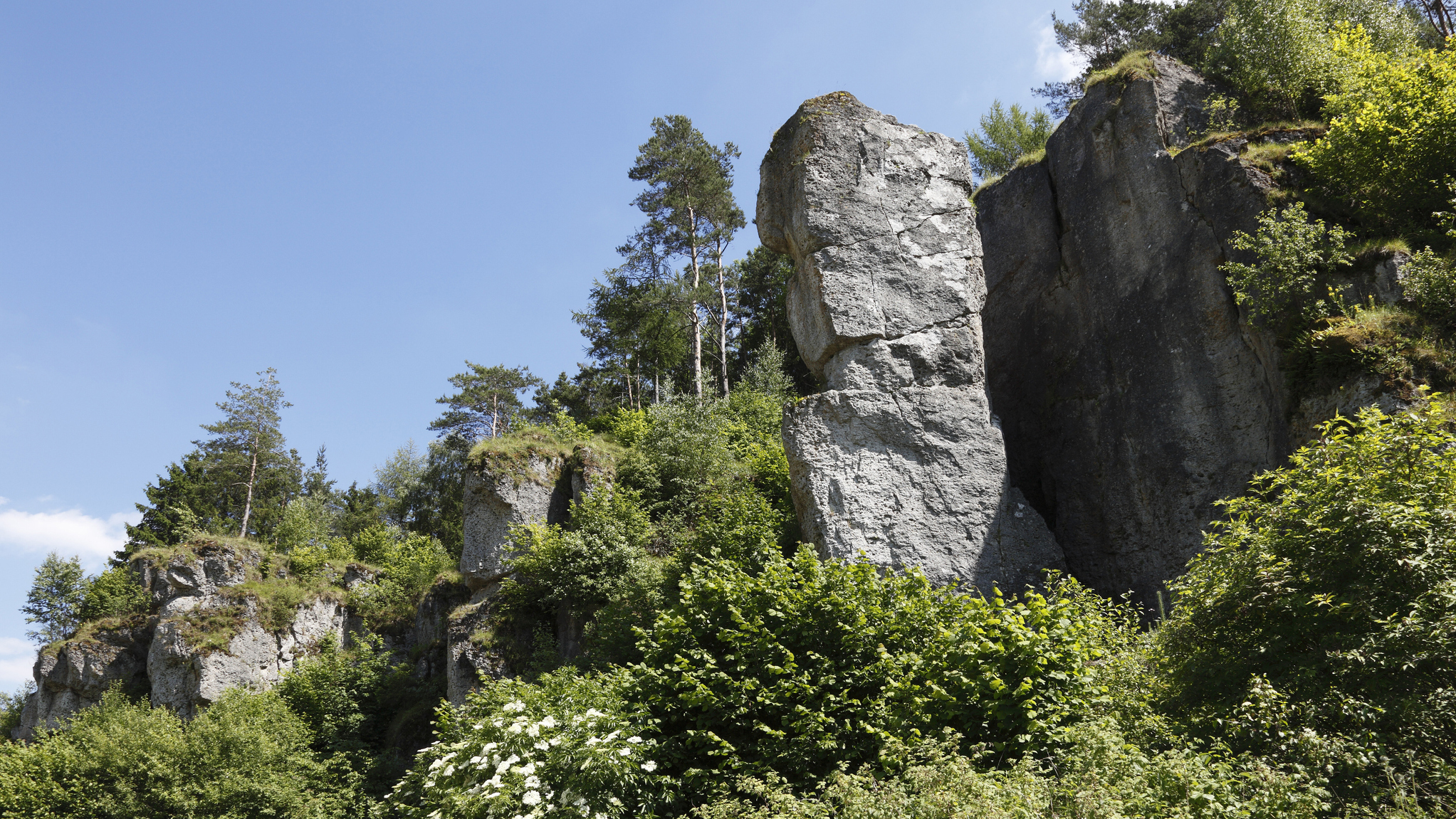
Albert would go on to achieve great things as a climber and alpinist. However, like his once climbing partner Güllich, his life was tragically cut short after falling from the Höhenglücksteig via ferrata in Bavaria in 2010. He was 56 years old.
Historic redpoint climbs
1975: Adolf Rott Ged.-Weg (5.10a): The original redpoint climb sent by Kurt Albert in Germany’s Frankenjura.
1983: The Face (8a+, 5.13c): British legend Jerry Moffatt plies his trade in the Frankenjura, redpointing the first ever 8a+ (5.13c) route.
1986: To Bolt or Not to Be (8b+, 5.14a): American sport climbing gathers momentum with Frenchman Jean-Baptiste Tribout’s climb of To Bolt or Not to Be at Smith Rock, Oregon, a place that’s very much the cradle of the pursuit in the States. The route was originally bolted by American pioneer Alan Watts.
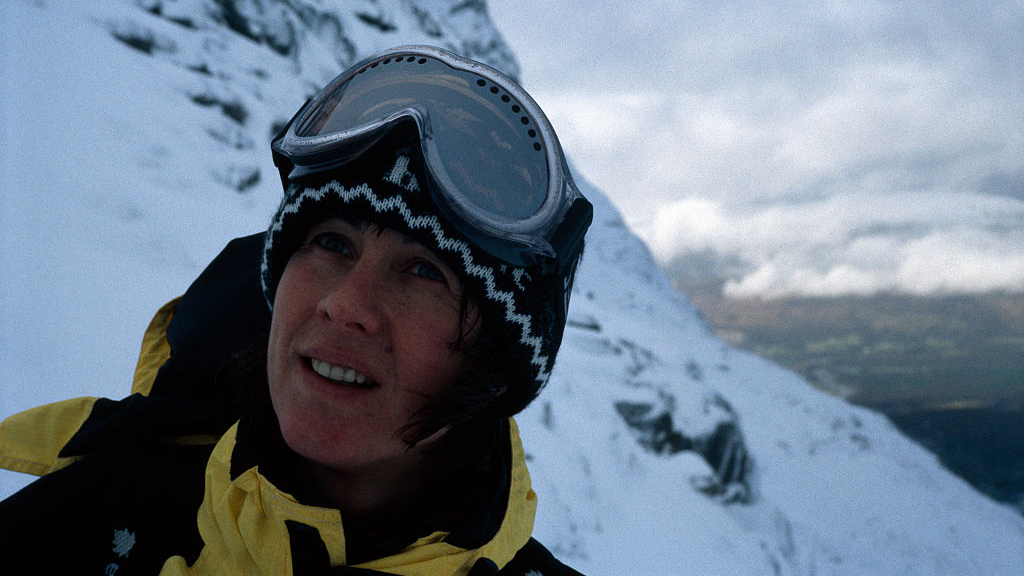
1988: Chouca (8a+, 5.13c): Legendary French sport climber and mountaineer Catherine Destivelle sends the overhanging, 25-meter Chouca in Buoux, France – the first ever of its grade for a woman.
1990: Mass Critique (8b+ 5.14a): American legend Lynn Hill proves French climber Jean-Baptiste Tribout wrong by becoming the first woman in history to climb a 5.14 graded route. Tribout had previously said that Mass Critique couldn’t be climbed by a woman.
1991: Action Directe (9a, 5.14d): Wolfgang Güllich, one of sport climbing’s most legendary figures sends the world’s first consensus 9a route in Germany’s Frankenjura while at the peak of his powers.
1996: Open Air (9a+, 5.15a): German climber Alexander Huber sends Open Air in the Tyrolean hotspot Schleierwasserfall, though he perhaps downplays the severity of the grade. After Adam Ondra repeats the climb in 2008, it’s regraded as a 9a+ (5.15a).

1998: Honky Tonky (8c, 5.14b): Basque sport climbing great Josune Bereziartu becomes the first woman to redpoint an 8c (5.14b) on Honky Tonky at Oñati, Spain.
2001: Realization/Biographie (9a+, 5.15a): Chris Sharma sends the overhanging limestone route on Céüse in France’s Hautes Alpes, making it the first 5.15a in the world. He renamed the route, originally Biographie, as Realization.
2008: Jumbo Love (9b, 5.15b): Having been bolted in the 1990s, it took until 2008 for this monstrous 80-meter route on Clark Mountain in the Mojave Desert to be free climbed by the legendary Chris Sharma.
2013: La Dura Dura (9b+, 5.15c): Adam Ondra sent Chris Sharma’s La Dura Dura project in Oliana, Spain, making it the first confirmed 9b+ (5.15c) in the world.
2017: La Rambla (9a, 5.15a): At just 19 years of age, Margo Hayes achieved a women’s first 9a in Siurana, Spain.

2017: Silence (9c, 5.15d): Czech legend Adam Ondra sent the first ever 9c on the overhanging Silence in Flatanger, Norway.
2017: La Planta de Shiva (9b, 5.15b): Austria’s Angela Eiter becomes the first woman to ever redpoint a 9b route in Andalusia, Spain.
2022: DNA (9c, 5.15d): Séb Bouin sends his project in the Verdon Gorge after over 250 attempts, only the second ever 9c route.
2023: B.I.G (9c, 5.15d): Austrian sport climber and competition legend Jakob Schubert sends B.I.G in Flatanger, Norway.







